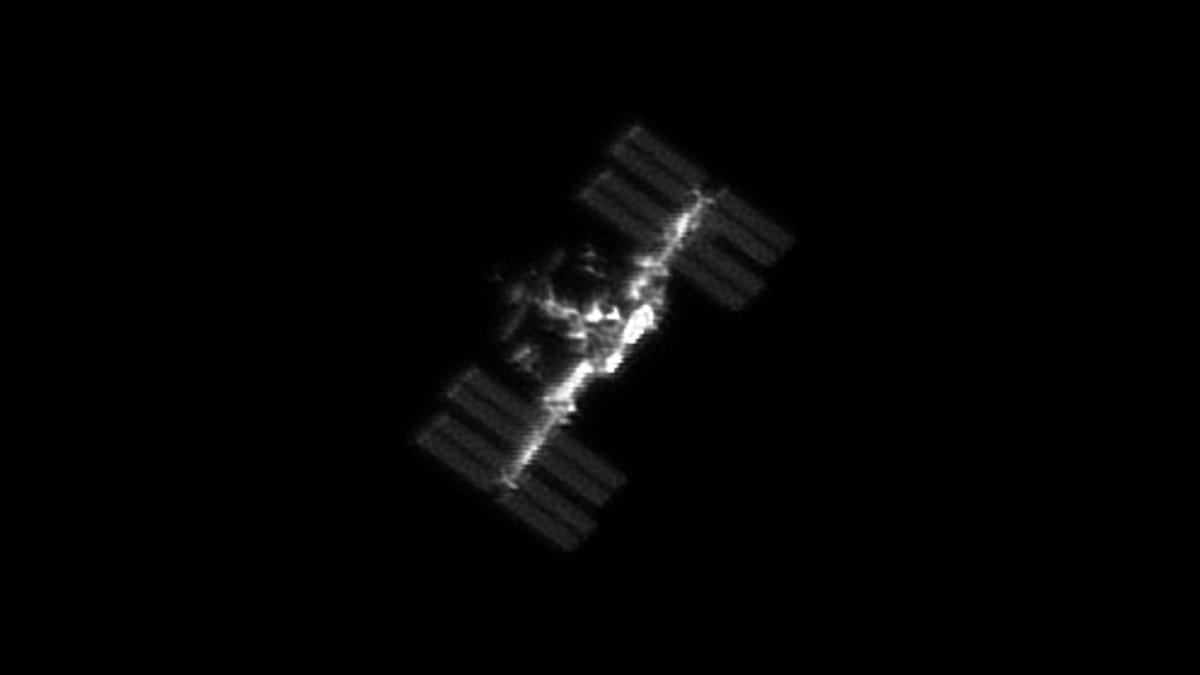Photographer snaps thrilling space station image from his backyard
An amateur astrophotographer takes on the challenge of getting a stunning shot of the ISS and succeeds. It's all in the timing.
If I stand in my backyard at night with a camera and take a picture of the sky, it will turn out as a blurry, amorphous mess. When Thomas Klemmer stands in his backyard in Germany and takes a picture, it turns out marvelous. Klemmer is an amateur astrophotographer who is far along in his craft. The proof is in an extraordinary photo he took Monday in the brief moments the International Space Station passed in orbit far above him.
In the right conditions and with the right timing, anyone can see the space station from Earth with the naked eye, but it looks like a small bright dot moving quickly across the night sky. Klemmer's image shows an impressive amount of detail, right down to the individual photovoltaic arrays extending out in parallel lines.
The ISS is particularly challenging because it moves very quickly across the sky, giving photographers only a few brief moments to get a good shot. According to NASA, it travels at about 17,500 mph (about 28,000 km/h). It takes a mere 90 minutes to orbit the planet.
Klemmer used a $2,700 (about £1,900, AU$3,500) Celestron telescope to help capture the photo. His eye, equipment and timing had to all be perfectly in sync. "The ISS is only visible during dusk or dawn since it has to be illuminated by the sun, but the sky has to be dark enough," he tells CNET.
Astrophotographers often use motorized telescope mounts that automatically adjust for the rotation of the Earth when imaging far-off objects like planets and nebulae. The ISS, however, is moving too fast to make this feasible. "My only option was to manually move the scope by hand while chasing the ISS through a secondary finder scope," says Klemmer. He estimates there was a 30-second window for getting a good shot when the ISS was directly above his location.
"The ISS is on a very good flight path over Germany right now and the good weather enabled me to test and improve my technique, equipment and exposure settings. It took me four sessions (one each morning) to get everything perfect and achieve this image," says Klemmer.
(Via Reddit)


